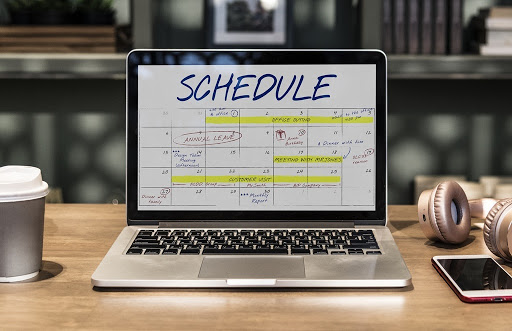The GTD method is a popular and practical way to organise the tasks that need to be done. Despite its simplicity - or perhaps because of it - it is highly effective in time management and efficiency. Its universality means that it can be useful for everyone from housewives to top managers.

What is the GTD method?
GTD is an English acronym, or acronym for Getting This Done. Roughly translated, it means "getting things done".
GTD is actually the name of a method that goes back to David Allen. Allen has also written a book about his method, which was first published in Hungarian in 2005, Take care of everything entitled. The book was later Increasing efficiency without stress - GTD - A new methodology for time management also published in the HVG Books series.
The GTD method is to make the tasks to be done as efficient as possible:
- to account for,
- organise and categorise,
- and implementation.
5 steps of the GTD method
One or more of the elements of GTD are probably used by many people - even those who have never heard of it. One of the secrets of the GTD method is that the whole process has to be followed through, consistently and persistently. If any step is skipped, the expected results will be missed.
Let's see the steps of the GTD method!
1. Capture - capture

The first step is that when you have a job to do, you should write it down somewhere. Where is secondary, even in a notebook, if that is convenient for someone.
However, there are also a number of online platforms available for this purpose. One of the most popular and widely used is ToDoist, but many people use JIRA, Trello or MS Todo. It can be launched directly, but is also available as a browser extension and on mobile devices. It also includes a number of additional features, such as task scheduling.
Of course, any other app or online platform will do. The point is to record every single task, without exception. This is as true for work tasks as it is for the most mundane tasks. Why this is so important is explained at the end of this article, How the GTD method works explained in the section.
2. Clarify - clarification
Just recording tasks can be a relief, but if we stop there, we are not much further ahead. After all, the result is a pile of all kinds of tasks that is difficult to review.
During the clarification process, each element of the set of tasks created will be examined and classified and made concrete:
- What exactly is the task?
- Can it be broken down into further steps? If so, which steps?
- Do we have to do it ourselves, or can it be delegated?
In addition, the 2 minute rule is very important: the GTD says that if a task can be done in 2 minutes or less, do it immediately. This way we can tick off many tasks that we would unnecessarily put off until later.
3. Organise - organising
The next step is to further categorise, prioritise and schedule tasks.
This can be done on the basis of several criteria. It is practical, for example, to prioritise them according to urgency, i.e. deadlines. You can also use the importance of tasks as a criterion for sorting - although in some ways, every task you list is important.
You can also categorise tasks on a project basis, for example:
- "Home",
- "Workplace",
- "Daily routine tasks",
- "Weight loss",
- "My own business" etc.

But the winners here are clearly the online platforms, such as ToDoist mentioned above, or Trello, Asana and so on. Most online task scheduling solutions also allow you to assign deadlines to tasks - making it easier to schedule them.
4. Reflect
This is basically the maintenance of the to-do list - it should be done at least once a week. This is when we update the status of each task. For example, we tick off the subtasks that have been solved, or add new subtasks to a more complex task according to its latest status, etc.
5. Engage - action
The four points so far show that the GTD method requires considerable attention and time. However, if these are not spared, step 5 will be quick and easy.
You are given a logical list of tasks containing all the information you need. Now you just have to carry out the next tasks in the sequence.
How the GTD method works

The GTD method can achieve significant efficiency gains, which have a psychological basis. The creative, problem-solving part of our brain works much better when we don't have to worry about what else needs to be done. From this point of view, it doesn't matter how important or trivial a task is. Every single unfinished business, even the smallest one, stresses our brain. In other words, unfinished tasks drain our resources and we can pay less attention to what we are doing.
This is why the first step of the GTD method is very important, i.e. to record everything that needs to be done, without exception. This will relieve the brain of the burden of worrying about what still needs to be done. Because once it is written down, it is in the system and, according to the GTD principles, it is only a matter of time before it is done.
Results of the GTD method
The GTD method takes time, but it can be incorporated into your daily and weekly routine. The time invested pays off many times over in terms of efficiency gains and time management. The result: more tasks completed in a given time, or in other words: more tasks completed in the same amount of time.
Of course, this short summary does not give the full essence of GTD, but it should be enough to get you started. If anyone wants more information, it is worth reading the book. And if you want to learn about other similar methods, you can find many similar ones on the web - for example in older articles on our blog.
Have a question? Contact us!
Would you like to improve your company's operations or schedule your own tasks more efficiently? Do you have other questions about process or project management? Let us do your due diligence and help you develop a process management strategy and process improvement methodology.

 Designabc
Designabc